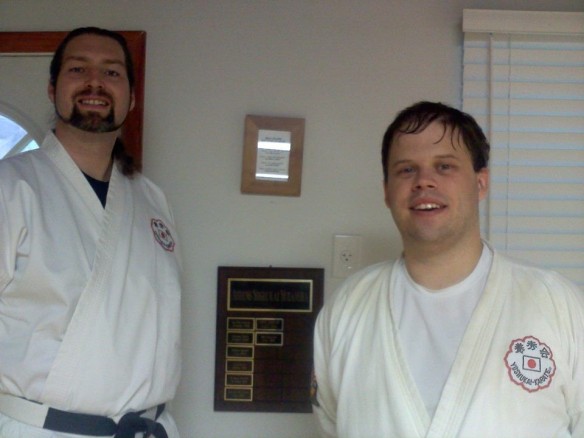The ranking system is so ingrained in karate culture that most of us don’t even stop to question it. We line up by rank. We defer to higher ranks. We know a black belt should be better at karate than us. But take a step back and questions come to mind: who started the ranking system and when? How did it develop? Why do we have colored belts? If someone is a black belt, how good should they be?
As ancient as it seems, the colored belt/black belt ranking system has only been used in martial arts for a little more than 100 years. Jigaro Kano, founder of Judo, was the first one to  confer black belts on his students in the 1880s. They were sashes rather than proper belts, as they wore kimono rather than dogi (these were developed later, also by Professor Kano). There were black belts and white belts, no in between. It wasn’t until the early 1900s that the colored belts were added in between white and black.
confer black belts on his students in the 1880s. They were sashes rather than proper belts, as they wore kimono rather than dogi (these were developed later, also by Professor Kano). There were black belts and white belts, no in between. It wasn’t until the early 1900s that the colored belts were added in between white and black.
Contrary to what the movies and assumption teach, having a black belt does not mean a martial arts practitioner is a walking weapon of destruction, ready to defeat anything that crosses his path. Rather black belt, or Shodan (which we know means “first”) denotes that a practitioner is competent in the basic techniques, philosophies and principles of his chosen style. If a martial arts journey is a flight of stairs, Shodan is the first step. All the kyu grades (the colored belts) are the landing leading to the stairs.
Does this mean the kyu grades are pointless? Of course not. You have to get to the stairs somehow. The kyu grades help those of us who haven’t been practicing martial arts for 30+ years a way to measure our progress, just as the degrees of black belt help to measure the progress of those more experienced. The kyu grades divide three years of material and study into manageable three to six month chunks. It allows more senior  students to teach junior students (say a green belt teaching a yellow belt) with a certain amount of authority and confidence. It gives more externally motivated students a clear goal that they can strive for. And it allows incremental improvements to be made on various techniques, with a certain improvement to be made with each rank.
students to teach junior students (say a green belt teaching a yellow belt) with a certain amount of authority and confidence. It gives more externally motivated students a clear goal that they can strive for. And it allows incremental improvements to be made on various techniques, with a certain improvement to be made with each rank.
Just because someone is a black belt does not mean they are a super duper awesome martial artist in all aspects. There are fighters and kata folks and teachers and everywhere in between. But if a person does have a black belt, especially in our dojo, you can be assured they at least have a grasp of the basic concepts of Yoshukai. They are no longer a basic student; they are a true learner of the style, one who has put in great time and effort to achieve that rank. That is what a black belt really is; time and effort. Competency, and later excellence, comes when those two requirements are met.
For more information on the history of the ranking system, see this article: http://www.minrec.org/wilson/pdfs/History%20of%20Belts%20and%20Ranks.pdf
Or there’s also Wikipedia: http://en.wikipedia.org/wiki/Black_belt_%28martial_arts%29




